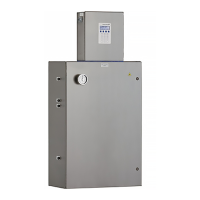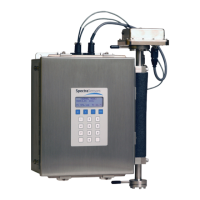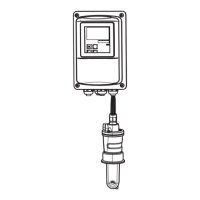Operating Instructions SS2100i-2 TDLAS Gas Analyzer
10 Endress+Hauser
N =
Figure 3 below shows the typical raw data from a laser absorption spectrometer scan including the incident laser
intensity, I
0
(), and the transmitted intensity, I(l), for a clean system and one with contaminated mirrors (shown to
illustrate the system’s relative intensity to mirror contamination).
Fig 2. Typical raw signal from a laser diode absorption spectrometer with and without mirror contamination
A. Resonance absorption Blue line: raw signal, I (l)
B. Red line: incident energy I
0
(l) Green line: raw signal, I (l) (contaminated mirrors)
The positive slope of raw data results from ramping the current to tune the laser, which not only increases the
wavelength with current, but also causes the corresponding output power to increase. By normalizing the signal by
the incident intensity, any laser output fluctuations are canceled, and a typical, yet more pronounced, absorption
profile results, as shown in figure 4 below.
Fig 3. Typical normalized signal from a laser diode absorption spectrometer
Contamination of the mirrors results solely in lower overall signal. However, by tuning the laser off-resonance as
well as on-resonance and normalizing the data, the technique self-calibrates every scan resulting in measurements
that are unaffected by mirror contamination.

